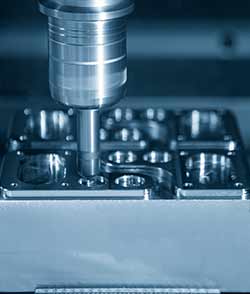Sealion's Horizontal Lathe Machine Features and Maintenance
Sealion's Horizontal Lathe Machine Structure Characteristics
The bed, footboard, oil pan, etc. of the horizontal lathe machine are integrally cast, featuring high rigidity, good vibration resistance, and conforming to the characteristics of high-speed cutting machine tools.
The spindle box uses a three-bearing structure, all with tapered roller bearings, making spindle adjustment convenient, with high rotation accuracy and good accuracy retention.
The feed box is equipped with a metric and imperial thread conversion mechanism, ensuring easy and reliable selection and conversion of thread types.
Inside the slide box, there is a tapered clutch safety device to prevent machine parts from being damaged due to tool overload during automatic operation.
The horizontal lathe machine tool is equipped with a four-position automatic feed mechanical stop device in the longitudinal direction. By adjusting the longitudinal position of the cam on the stop rod, the required length of the workpiece can be set, achieving the longitudinal size processing of the parts.
The tailstock is equipped with a stepless speed regulation device to meet the needs of drilling and reaming.
The CNC horizontal lathe machine lubrication system is reasonably and reliably designed. The head box, feed box, and slide box all use internal splash lubrication, with additional pipe pumps and plunger pumps set up for automatic forced lubrication of special parts.
Sealion's Horizontal Lathe Machine Maintenance
Precautions for clamping and correcting workpieces on horizontal lathe machine
Before clamping the workpiece, any carbon dust, mud, and other impurities must be removed from the workpiece to prevent these impurities from embedding into the slideway, thereby increasing the wear on the soft guide rail or causing it to seize.
When clamping and correcting workpieces that are large in size, complex in shape, or have a small clamping stack, a wooden bed cover should be placed on the lathe bed below the workpiece beforehand. Additionally, use a pressure plate or movable center to support the workpiece to prevent it from falling and damaging the lathe. If the workpiece is found to be improperly positioned or skewed, do not forcefully strike it to avoid affecting the horizontal lathe machine spindle's accuracy. Instead, slightly loosen the clamping jaws, pressure plate, or center, then gradually make corrections.
Placement of Tools and Cutter Heads
Do not place tools and cutter heads on the bed to avoid breaking the guide rail. If necessary, cover the bed first and place tools and cutter heads on the bed cover.
When grinding workpieces, cover the lathe bed under the workpiece with a bed cover or paper; after grinding, clean the bed carefully.
When turning cast iron workpieces, install the guardrail cover on the throttle board and wipes off the lubricant on the bed where the chips might splash.
When the horizontal lathe machine is not in use, it must be cleaned and maintained to prevent chips, sand, or impurities from entering the sliding surface of the lathe guideway and causing it to seize or wear out faster.
Before using the coolant, the lathe guideway and coolant tray of the horizontal lathe machine must be cleaned of debris; after use, wipe off the coolant on the guideway and add mechanical lubrication for maintenance.
-

The 16th China International Machine Tool Exhibition (Cimt2019) Was Held In Beijing
On April 15, 2019, the 16th China International Machine Tool Exhibition (cimt2019), sponsored by China Machine Tool Industry Association and co sponsored by China International Exhibition Center Group... -

The Importance of Double Column Vertical Lathes in Mining Machinery and Oil Extraction Equipment
Double-column vertical lathe is an indispensable essential equipment in modern machining, especially in the manufacturing process of mining machinery and oil extraction equipment. Due to its character... -

The Requirements of CNC Lathes for Plant Environment Temperature
1. The requirements of CNC turning machines for plant environment temperatureCNC turning machines can efficiently process high-precision turning workpieces, and the processing methods also have functi...





